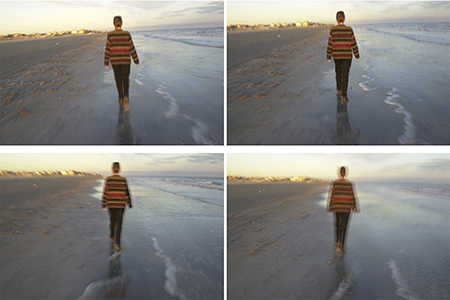OTV: Intro
Narrativity meets information theory: A modern, dualistic drama — of sorts
The work from the series On the Verge, references empirical evidence and time-based media, namely the “real” world as recorded by film and video. But it also compounds this reference with another, that is, the platonic void of the “virtual”, the world of numbers.
Typically in these works, a figure shown in a grid of multiple frames walks vigorously forward in various landscapes. The principle function of the woman is to draw us into the landscape. We see her through the monoptical eye, the conventions of a moving (digital) camera that follows closely behind.
Paired or layered with each set of walking images is the representation of a kind of parallel, “perfect”, world comprised of various computer constructed objects or scenes having some significant or symbolic association to the actual shooting site. In Kingdom | Topological Model, for example, the view seen from the hillside where the woman walks is represented — in this case quite specifically — in the topological computer model shown below. There are also several pieces in which the “real” and the “virtual” are superimposed, e.g., Walking East of Rickers Field | Composition Chequerboard, Mondrian.”
We tend to see these works with their dual representations as a contest for the viewer’s affections rather than as one component adding to or expanding on the other. The narrative is embedded in the contest. Which realm is the more compelling? Which sign-set dominates — the nearly exhausted but still palpable photographic landscape or the coolly seductive but intangible language of computer generated imagery (CGI)?
Galveston West Beach | Primitives (wireframe), detail, 2004
